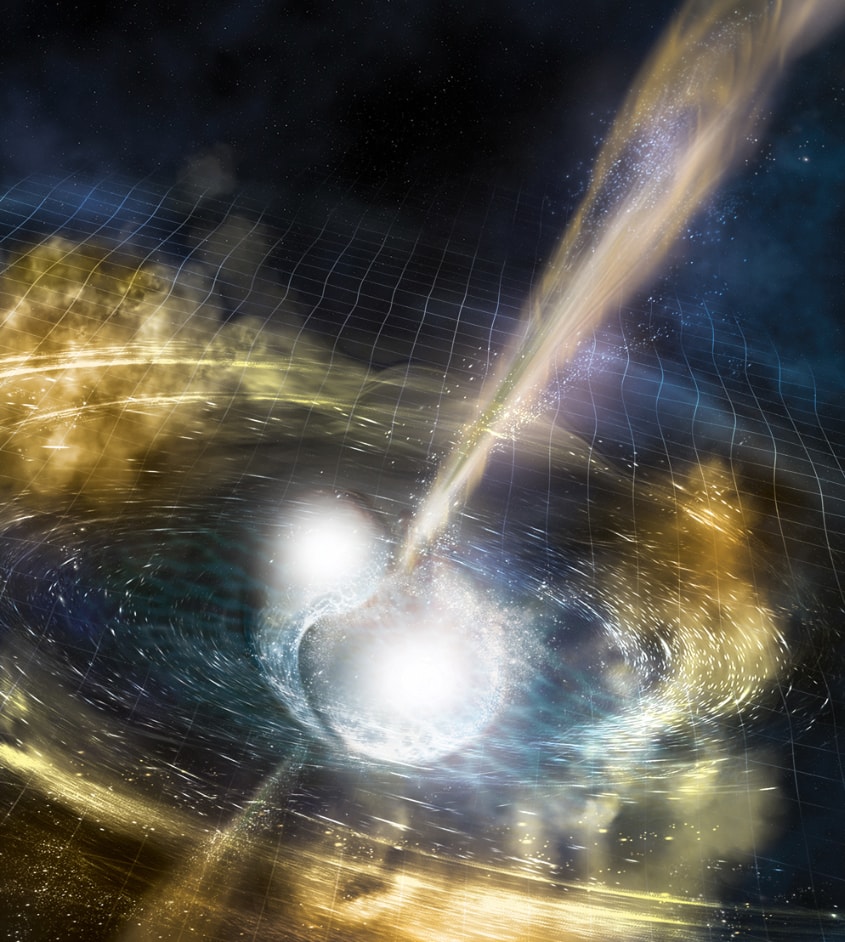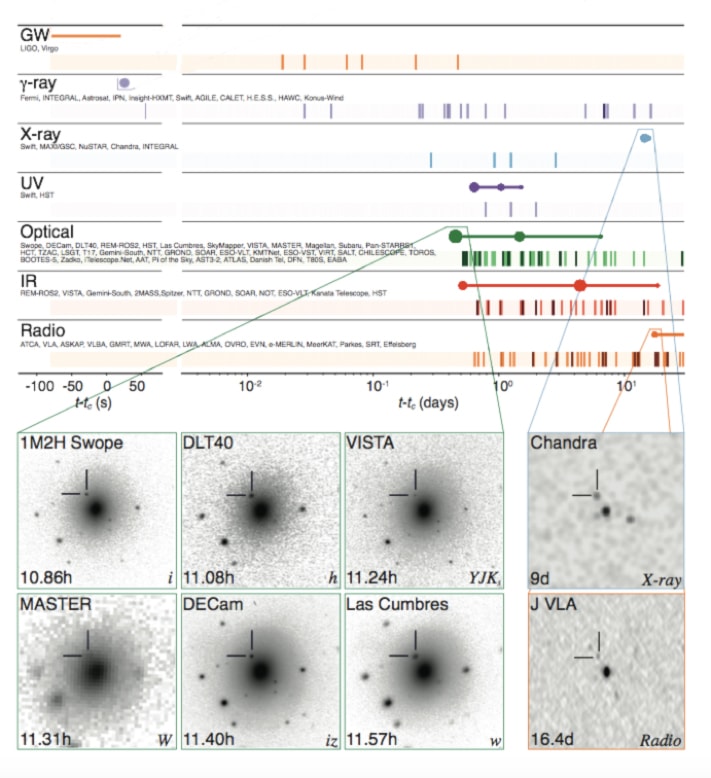A New Era in Gravitational Wave Astronomy
A Good Month for Gravitational Wave Astronomy

The story for the announcement made today began over 130 million years ago in a galaxy 130 million light years away from us when two neutron stars spiraled in to one another and merged. This merger created gravitational waves and a short burst of high energy electromagnetic radiation, a γ-ray burst. It also produced heavy elements, which subsequently decayed and produced a large flux of lower energy photons at multiple wavelengths. This brightening is called a kilonova. All of these products – the ripples in space-time and the photons at many wavelengths – propagated through space for all this time until they were detected on August 17, 2017 by the LIGO/Virgo collaboration. Since this gravitational wave detection was produced by merging neutron stars, it is different than the four that preceded, which were caused by merging black holes. Therefore, the event was followed up by detections using multiple telescopes that focused on the region of interest. First, it was observed as a γ-ray burst; then it was detected by telescopes as a bright spot where previously there had been darkness.
Image credit: NSF/LIGO/Sonoma State University/A. Simonnet
The event is perhaps the grandest demonstration yet that science is an international endeavor, with dozens of telescopes built and operated by thousands of scientists joining forces to confirm that the event was likely an explosion caused by the merger of two neutron stars. The event is significant also because it ushers in a new era in astronomy, one in which gravitational waves will point the way to exotic phenomena and, combined with observations from telescopes that detect electromagnetic waves, will enable the scientific community to learn more about the mysteries of the cosmos.
Fred Gilman, the Director of the McWilliams Center for Cosmology at Carnegie Mellon, said "This event will stand as a remarkable achievement for the astronomical community and opens up the door for even more exciting time-domain astronomy that will emerge during the LSST era.” One of the first optical telescopes to observe the event was the Dark Energy Camera, the primary observing tool of the Dark Energy Survey, whose Science Committee co-chair is Scott Dodelson, Head of the Physics Department.
